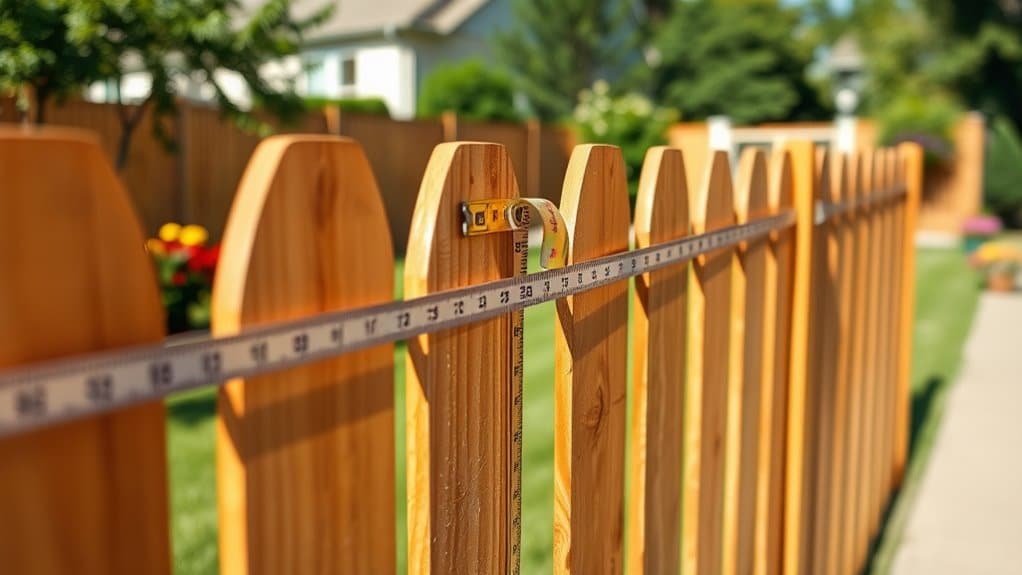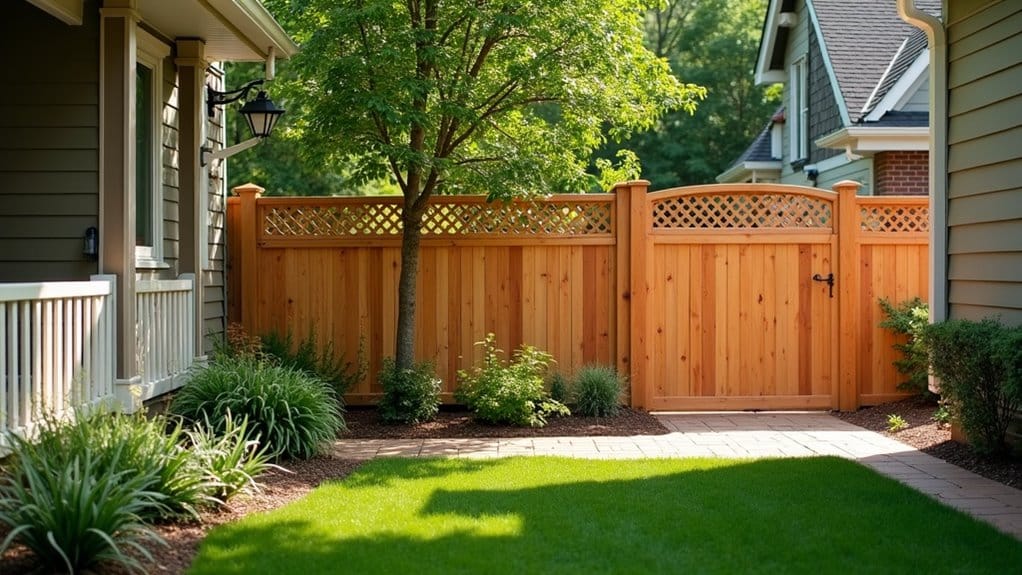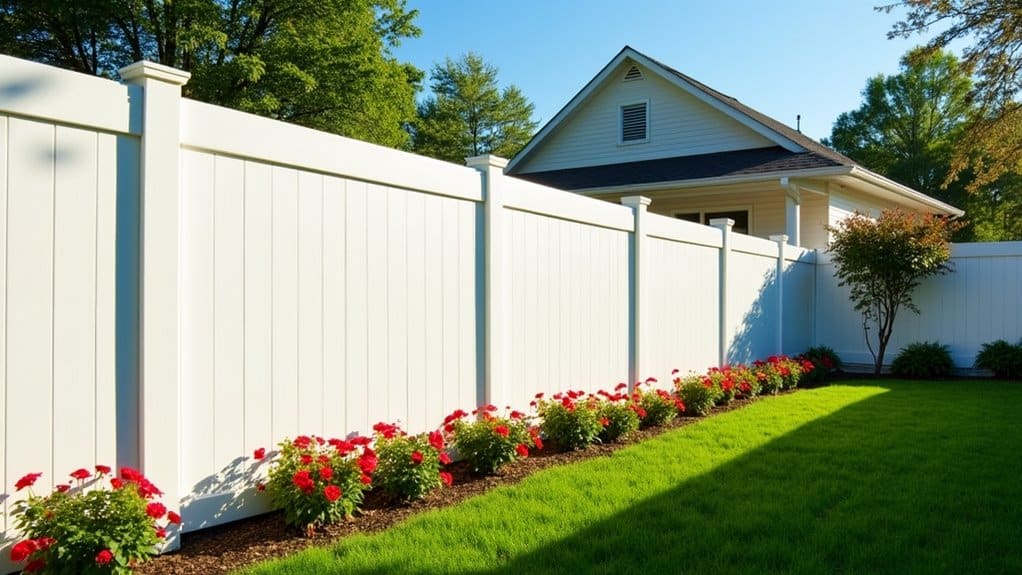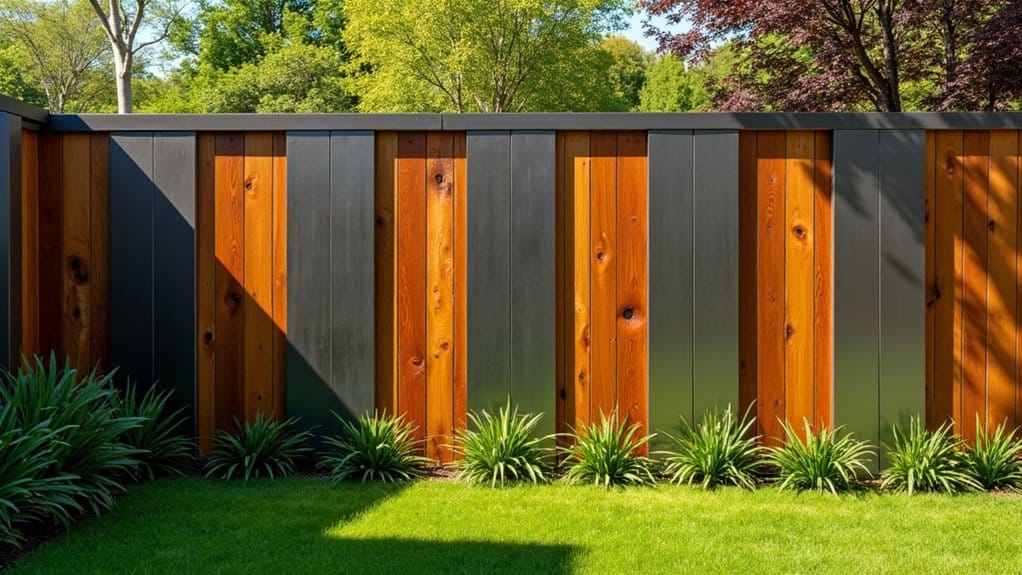Fence height regulations can vary based on your location. Generally, residential fences are capped at 6 feet, while front yard fences usually have stricter limits of 3 to 4 feet to ensure visibility. In contrast, backyard fences can reach up to 8 feet. Always check your local zoning laws, as you might need a permit for fences taller than 6 feet, and there may be additional restrictions. If you live in a neighborhood with a homeowners association, expect guidelines on design and materials. Being aware of these regulations can help you avoid disputes and fines.
Key Takeaways
Fence height regulations differ by location, generally allowing backyards to be 6 to 8 feet tall and front yards 3 to 4 feet. If you plan to build a fence over 6 feet, you'll likely need a permit, so it's crucial to check your local rules.
Homeowners associations (HOAs) might have stricter guidelines for fence height and design to keep the neighborhood looking nice. Talking with your neighbors about your fence plans can help avoid conflicts and ensure you stay within property lines and regulations.
Lastly, stay updated on local zoning laws and keep your fence well-maintained to avoid fines or having to take it down.
Overview of Fence Height Regulations
Understanding fence height regulations is crucial for anyone planning to install a fence. These rules differ by location and impact your choice of materials and design. For example, front yard fences usually have stricter height limits than those in backyards to maintain neighborhood aesthetics. In many areas, the maximum fence height is generally capped at 6 feet, which is important to consider when planning your project.
When measuring fence height, account for slopes or retaining walls; measurements should be taken from the midpoint between the wall and the ground on both sides. It's important to note that fences over 6 feet require a building permit.
Ensure your fence doesn't block sightlines for drivers and pedestrians, especially in commercial areas or on corner lots, which have specific requirements.
If you want to build a taller fence, you'll need to submit applications and documents like site plans and elevation details. Public hearings may also be required.
Always check local laws, as some places have stricter rules, especially in historical districts or under homeowners' associations.
Maximum Height Limits
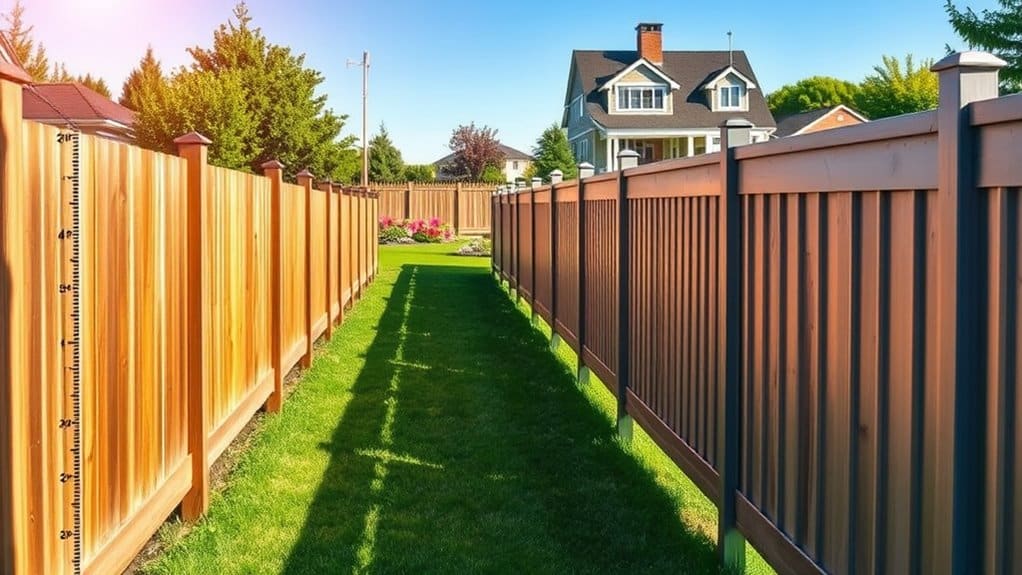
Fence height limits in residential areas usually range from 6 to 8 feet for side and back fences, while front yard fences are typically limited to 3 to 4 feet. However, these rules can differ significantly by location, even within the same city. Always check your local zoning laws to ensure you follow the maximum height limits that apply to your area. Height is the most regulated characteristic of a fence, making it essential to understand and comply with these regulations. Additionally, local municipality regulations can vary by residential area, affecting the allowed height of your fence.
Residential District Standards
Residential district standards set clear height limits for fences to enhance safety and maintain neighborhood aesthetics. Here's what homeowners need to know:
- Height Limits: Fences generally can't exceed 6 feet tall, and front yard fences must be under 4 feet to ensure visibility.
- Corner Lots: On corner lots, fences can be up to 6 feet high on the side, but front yard limits still apply.
- Property Lines: Install fences on your property line, but get your neighbor's consent for any new fence or modifications. Understanding local regulations is essential to prevent disputes and ensure compliance.
- Permits: Typically, no permit is required for fences up to 6 feet, but historic district properties may need special approval.
Choosing the right fence materials and installation methods is crucial for compliance and to avoid disputes.
Following these height regulations helps maintain safety and enhances your neighborhood's curb appeal. Always check your local requirements before starting your project.
Local Regulation Variability
Fence height regulations can vary widely, so it's essential to know the limits in your area to stay compliant and avoid disputes. Local rules depend on property type, location, and zoning laws. For example, front yard fences are typically limited to 3 to 4 feet for visibility and aesthetics, especially near streets. Local authorities enforce fence height limits to ensure safety and visual harmony within neighborhoods. Additionally, local ordinances may specify different height requirements for various property types, so it's crucial to verify these before construction.
Here's a quick overview of typical height limits:
| Property Type | Maximum Height Limit |
|---|---|
| Front Yards | 3 to 4 feet |
| Residential Zones | 4 to 6 feet |
| Commercial Zones | Up to 8 feet |
| Rural Areas | 5 to 8 feet |
| Natural Fences | 5 to 8 feet |
Urban areas often have stricter regulations than rural ones. Zoning bylaws also cover fence design, materials, and placement. Failing to meet these regulations can result in fines or the need to modify your fence. Always check your local ordinances and homeowners' association rules to ensure your fence complies with the guidelines.
Temporary Fence Guidelines
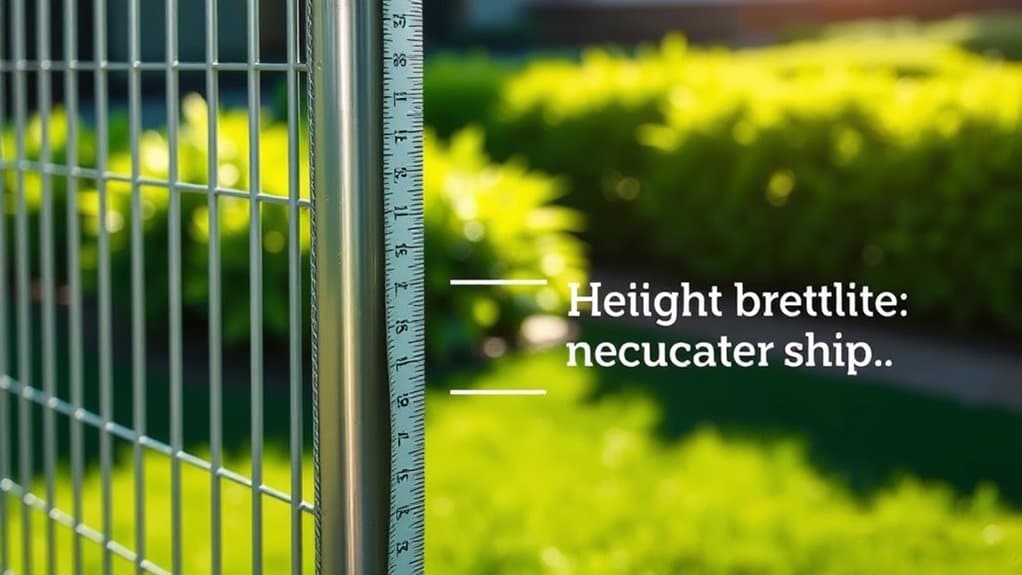
Temporary fences are crucial for safety and security at construction sites and events. To ensure effective installation, keep these key points in mind:
- Stability: Use solid bases or footings to keep your fence stable.
- Security: Weigh down the fence with sandbags or other heavy materials to prevent it from toppling over.
- Panel Connection: Use strong couplers to connect fence panels, creating a barrier that keeps unauthorized individuals out.
- Terrain Preparation: Clear away debris and level the ground before setting up the fence for enhanced safety. Additionally, consider wind resistance by designing fencing to withstand local weather conditions. Make sure to check for local regulations as they may dictate specific installation requirements.
Don't forget to check local regulations for any required permits, especially for larger setups, and follow OSHA guidelines for construction sites.
Regular inspections are also important to ensure the fence remains intact and safe. By adhering to these guidelines, you can maintain a secure environment for your project or event.
Front Yard Fence Restrictions
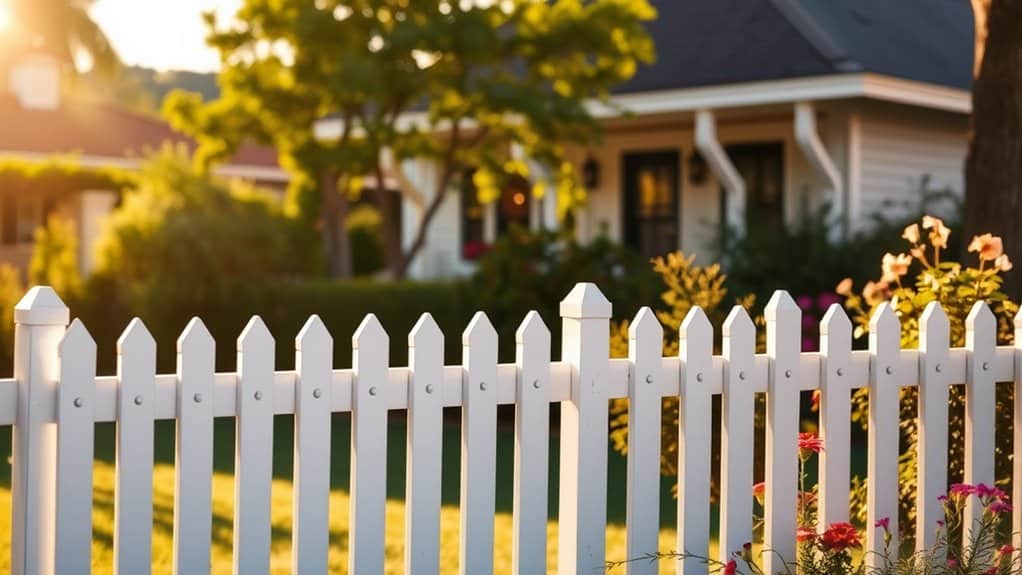
Front yard fence restrictions are essential for neighborhood safety and aesthetics. Generally, fences in front yards should be between 3 and 4 feet tall. This height ensures that drivers and pedestrians can see clearly, which helps keep children and pets safe. Some areas might allow taller fences, but it's crucial to check your local regulations first. Additionally, Missouri law limits front yard fences to a maximum height of 4 feet between neighbors. Ensuring compliance with local zoning laws can prevent potential legal issues related to your fence.
Here's a quick reference table:
| Aspect | Restrictions | Considerations |
|---|---|---|
| Typical Height | 3-4 feet | Improves visibility |
| Permit Requirement | Often needed for changes | Prevents fines and disputes |
| Fence Materials | Varies; metal may have fewer restrictions | Choose materials that match your home's style |
| Special Situations | Stricter for corner lots | Enhances safety at intersections |
Following local laws helps maintain good relationships with neighbors and keeps your fence in line with community standards. If you want a taller fence, be prepared to apply for a variance or special permit. Always refer to local zoning laws for the most accurate guidance on your fence project.
Backyard Fence Standards
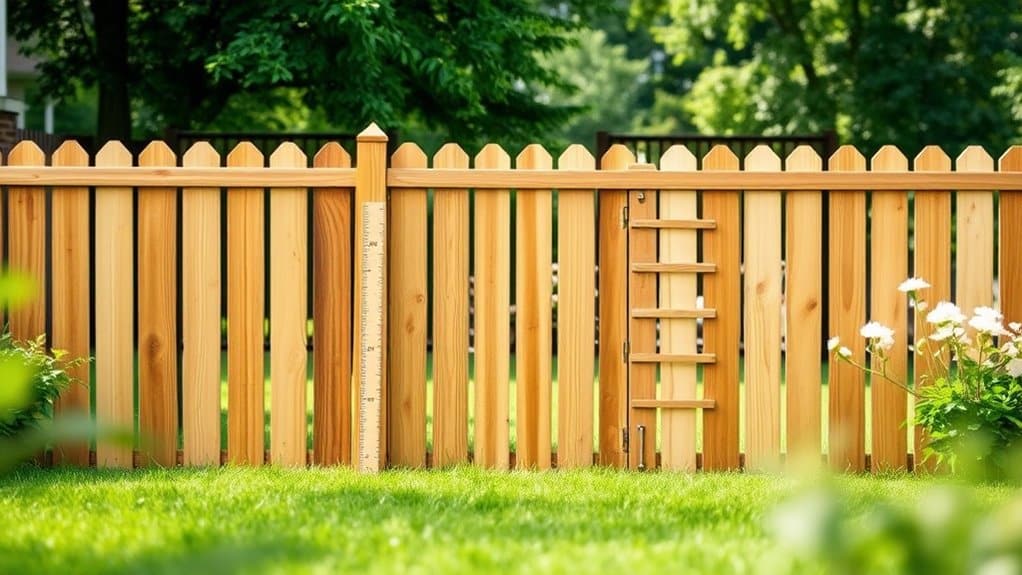
When it comes to backyard fence standards, height limits can vary by location.
For example, many areas allow fences up to 6 feet tall for privacy and security. However, it's crucial to check your local regulations to avoid fines and ensure your fence meets community standards.
Familiarizing yourself with these rules will make the process smoother and help you choose the right fence for your needs. Additionally, be aware that maximum height regulations for front yard fences may also impact your overall fencing plans, especially in areas with stricter rules.
Height Limit Variations
Backyard fence height regulations vary by location, so homeowners should know the specific rules in their area. Here are some important points to consider:
- Standard Heights: Most residential fences are between 6 to 8 feet tall, with 6 feet being the most common.
- Front Yard Regulations: Fences in front yards are typically lower, around 3 to 4 feet.
- Special Permits: If you want a fence taller than the standard limits, you may need to apply for a special permit. Local regulations may dictate maximum height.
- Corner Lots and Pools: Corner lots and pool areas have unique safety rules that can affect height limits.
Always check with your local planning department before installing a fence, as rules can vary even within the same city.
Understanding these regulations helps you stay compliant and avoid potential fines or having to remove your fence.
Privacy and Security
A well-built privacy fence can significantly boost your home's security while offering a peaceful retreat.
For height, consider a range of 6 to 8 feet. Taller fences block views and deter intruders, making them essential for security. In crowded neighborhoods, opting for the maximum height may be necessary for the privacy you seek. Additionally, be aware of local civil codes that dictate the maximum allowable height for privacy fences in your area.
The slope of your yard is also important; on sloped properties, taller fences may be needed at lower ends to ensure consistent privacy.
Adding decorative elements like lattice or pickets can improve the fence's look without sacrificing function.
Always prioritize your main goals—privacy, security, or aesthetics.
Check local regulations and consult a contractor to ensure your fence meets requirements and serves your needs.
With careful planning, you can create a secure and attractive outdoor space that fits your lifestyle.
Local Regulation Compliance
Navigating local fence regulations can seem daunting, but it's crucial to know the basics. Each town has unique rules about backyard fences, so it's important to do your homework before starting your project.
Here are four key points to consider:
- Height Limitations: Most areas allow fences between 6-8 feet tall. Always check your local guidelines to be sure. Additionally, many municipalities enforce maximum height restrictions of 6 feet for backyards.
- Material Restrictions: Some materials, like chain-link, may not be allowed in certain residential areas.
- Setback Requirements: Fences often need to be a specific distance from property lines, especially in front yards.
- Zoning Variances: If your fence plans don't meet local regulations, you may need to apply for a zoning variance.
Ignoring these regulations can result in fines or having to remove your fence.
It's wise to consult with professionals who understand your area's specific rules on materials and height. This will help ensure your fence enhances your property while staying compliant.
Homeowners Association Rules
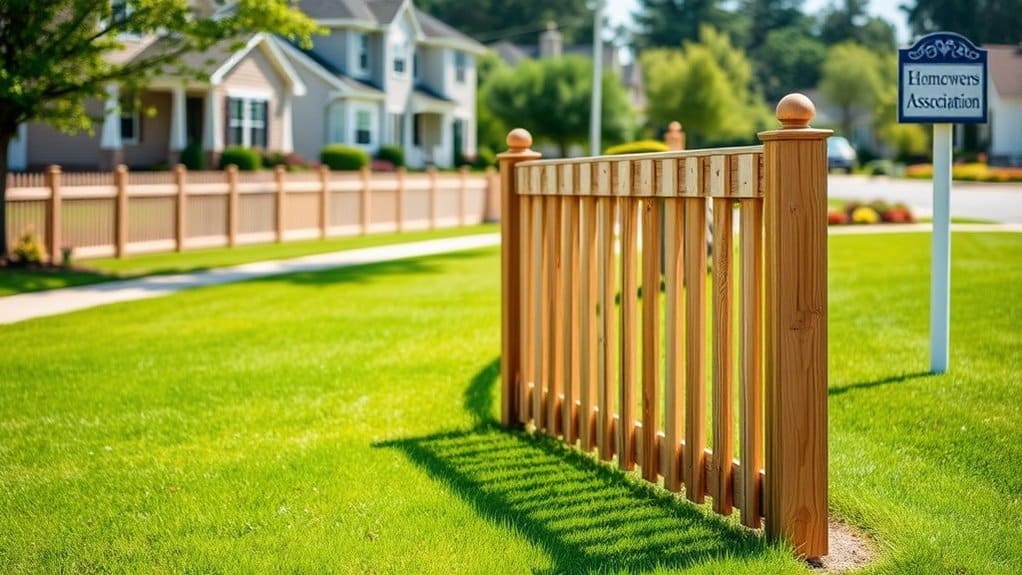
When planning to build a fence in an HOA community, it's crucial to follow the specific rules in place. Here's a straightforward guide to common HOA fence regulations:
| Aspect | Front Yard | Rear Yard |
|---|---|---|
| Height Limit | 3-4 feet | Up to 6-8 feet |
| Material | Uniform materials only | Approved materials only |
| Design | Minimal ornamentation | Limited design options |
| Approval Needed | Yes | Yes |
Before starting your fence project, review your HOA guidelines. You'll typically need to submit blueprints and material details for approval. Ignoring these rules can lead to penalties, so it's important to comply. Following these regulations helps maintain your property's value and keeps the community looking cohesive.
Measurement and Installation Tips

Before starting your fence installation, accurate measurements are crucial for success. Here are some straightforward tips to ensure your project goes smoothly:
- Use a Tape Measure: Measure from the ground to the top of the fence, paying attention to any changes in ground level.
- Mark Corner Posts: Use stakes at 90-degree angles to help guide your measurements around the perimeter.
- Account for Slopes: Assess the slope to determine if your fence should step or rack for a level appearance.
- Double-Check Measurements: Always measure twice to ensure accuracy.
With these tips, you'll set yourself up for a successful fence installation!
Legal Considerations for Fences
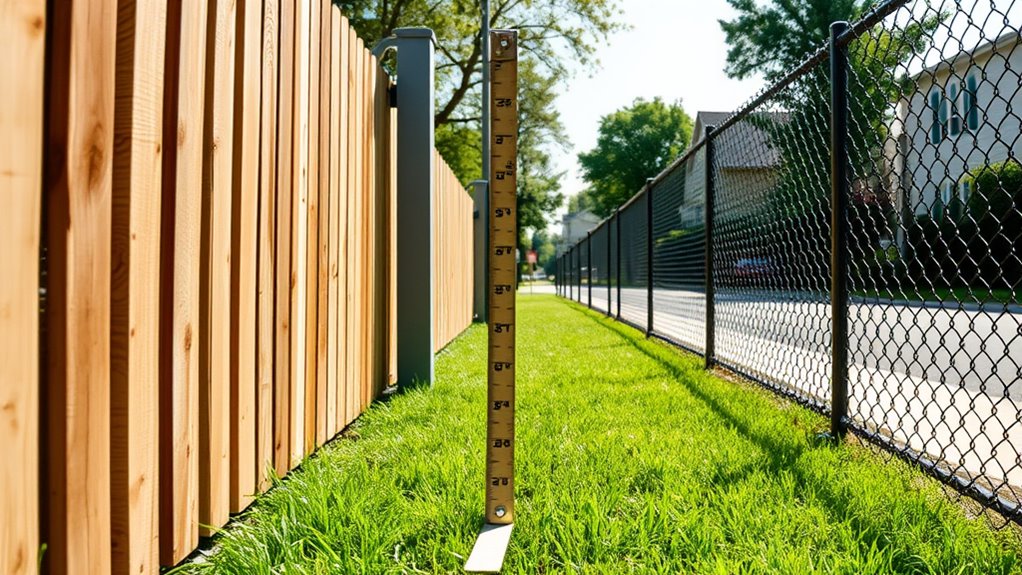
Before building a fence, it's crucial to check local laws since rules about height and placement can differ significantly.
For instance, some areas may require permits for fences taller than six feet. Ignoring these regulations can result in fines and potential conflicts with your neighbors, so it's best to do your homework first.
Local Ordinances Importance
Understanding local ordinances is crucial for homeowners planning to install a fence. These regulations set rules for height, materials, and placement, helping you avoid fines and ensuring your fence enhances your property. Zoning authorities typically enforce these ordinances to maintain community standards.
Here are four key points to remember about local ordinances:
- Height Restrictions: Most residential fences have height limits between 4 to 6 feet, with different rules for front and back yards.
- Material Guidelines: Some areas specify acceptable materials like wood or vinyl, which can influence your fence design.
- Boundary Clarity: Knowing your property lines is vital to avoid disputes and comply with setback rules.
- Legal Consequences: Ignoring local ordinances can result in fines or other penalties, so it's important to stay informed and compliant.
Permitting Process Essentials
Navigating the fence permitting process is crucial for meeting local regulations. First, complete a permit application, which many cities now let you submit online. Don't forget to pay any required fees.
A key part of your application is the site plan. This should show where you want to place the fence and its distance from other structures. Ensure the fence is entirely on your property and respects property lines.
Also, check for any easements that might limit where you can build.
After submitting your application and site plan, the local commission will review them against building codes. If any changes are needed, they'll let you know.
If everything is in order, you'll receive an approval notification, usually via email.
Permit Requirements Explained
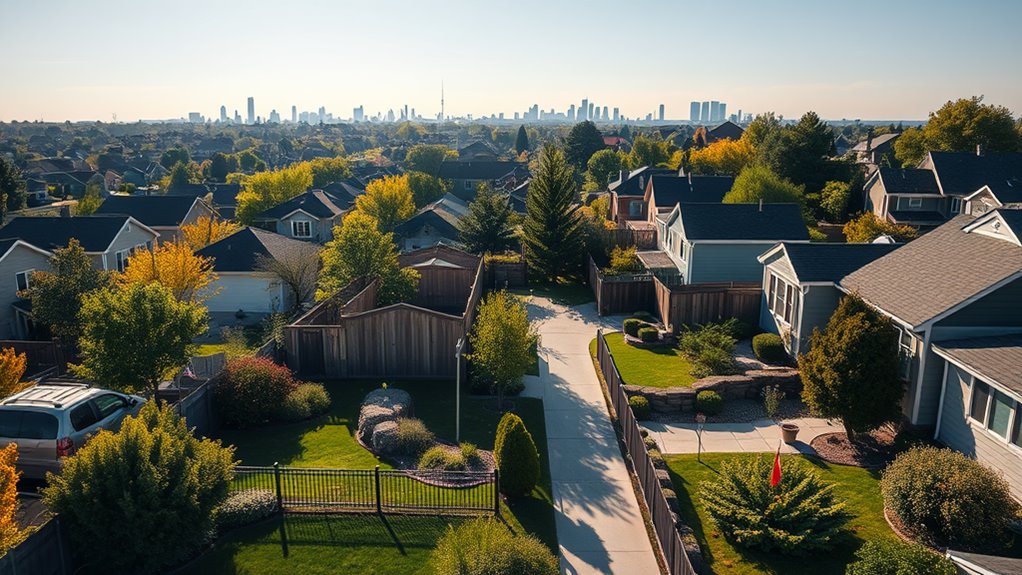
Building a fence can boost your property's privacy and appeal, but it often requires a permit. Here's what you typically need to consider:
- Height Limits: If your fence exceeds the local height limit, usually around 6 feet, you'll likely need a permit.
- Materials: Choosing certain materials, like masonry or concrete, may also trigger permit requirements.
- Location: Fences in flood-prone areas or those serving as retaining walls often need permits for safety reasons.
- Local Regulations: Each area has its own zoning ordinances and building codes that can affect permit needs.
When applying for a permit, provide accurate details about your fence's location and materials.
You might also need a boundary survey if you're near property lines.
Always check with your local zoning department to ensure compliance and keep your project on track.
Variations by Location
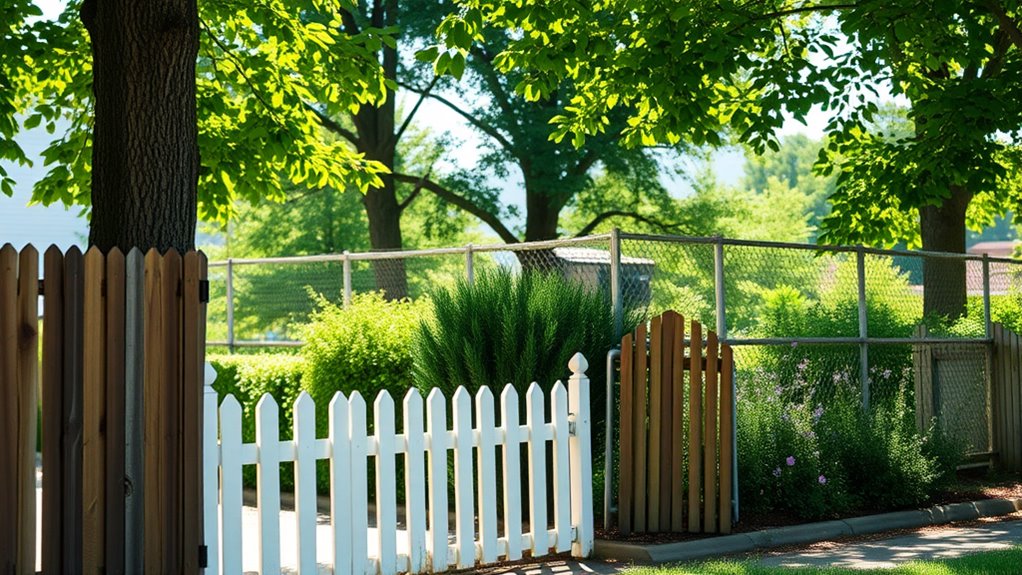
Fence height regulations vary by location, so it's crucial to know the rules in your area before planning your fence. Here's a quick overview:
| Location Type | Front Yard Restrictions | Backyard Restrictions |
|---|---|---|
| Residential Areas | 3-4 feet | 6-8 feet |
| Corner Lots | 3 feet for front yard | 6 feet for sides/rear |
| Agricultural Areas | No height restrictions | No height restrictions |
| Industrial Districts | Design review required | Design review required |
| Scenic Resource | Administrative review | Varies by location |
Impact on Neighborhood Aesthetics
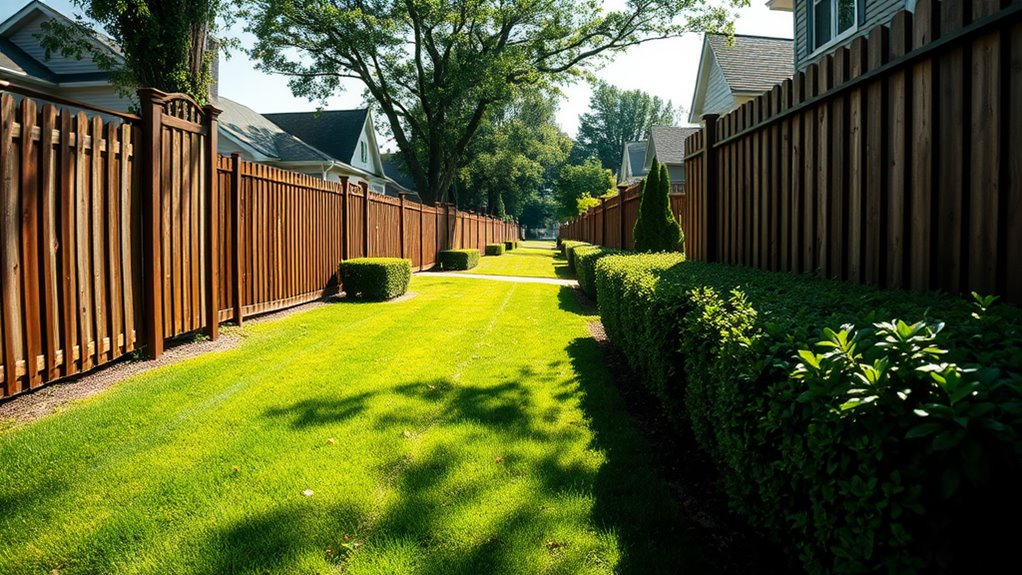
Understanding fence height regulations is crucial for enhancing neighborhood aesthetics. Choosing the right height and style not only improves your property but also supports community identity.
Here are some key points to consider:
- Visibility: Front yard fences should generally be 3 to 4 feet tall, which boosts curb appeal and keeps sight lines clear.
- Privacy: Taller backyard fences, up to 6 feet, provide privacy while maintaining the neighborhood's overall look.
- Cohesion: Uniform fence heights help create a cohesive visual identity for your community.
- Materials: Select materials that complement your home's architecture and match neighborhood standards for a harmonious appearance.
Maintaining Compliance With Regulations
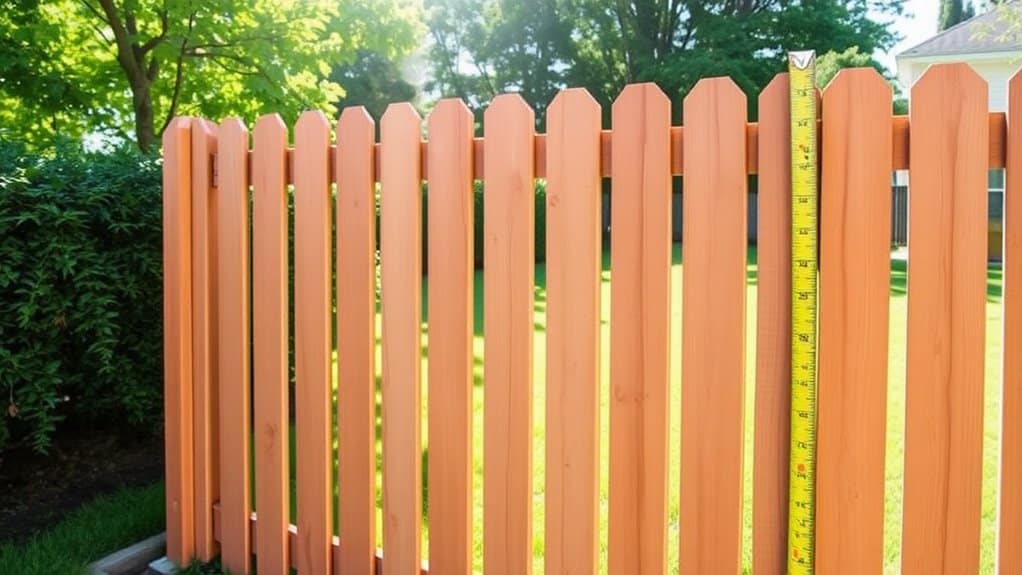
To comply with fence height regulations, it's essential to understand local laws. Ignoring them can result in fines or fence removal. Communicate openly with neighbors to address any concerns. Regular maintenance is also crucial, as a well-kept fence meets aesthetic standards.
| Aspect | Details |
|---|---|
| Max Height | 6 feet in residential areas |
| Front Yard Limit | 4 feet for fences in the front yard |
| Corner Lots | 6 feet on the side for visibility |
| Permit Requirement | Needed for fences over 6 feet |
| Material Restrictions | Certain materials may be limited |
Know your property lines to avoid conflicts, and check with your local zoning office for specific rules. Being proactive ensures your fence meets standards and promotes good neighborly relations.
Frequently Asked Questions
Can I Build a Fence Without Notifying My Neighbors?
You can technically build a fence without telling your neighbors, but it's a good idea to talk to them first to keep the peace. Also, don't forget to check local laws and regulations before you start your project.
What Materials Are Most Commonly Used for Residential Fences?
If you're thinking about a fence, wood options like cedar and pressure-treated pine are durable, while vinyl fencing is low-maintenance and customizable. Each choice suits different looks and practical needs for your property.
How Do I Choose the Best Fence Style for My Home?
To choose the best fence style for your home, pick a design that matches your house's architecture. For example, a classic picket fence works well with traditional homes, while a sleek metal fence suits modern styles. Consider materials like wood or vinyl for durability against the weather. Remember to think about maintenance—some materials require more upkeep than others. Aim for a fence that looks great and lasts long.
Are There Any Environmental Considerations for Fence Installation?
When installing a fence, think about both looks and the environment. Your choices can impact local wildlife. Use eco-friendly materials and try to minimize disturbances to help protect ecosystems while improving your property. For example, consider using recycled wood or metal, and avoid installing in sensitive habitats.
What Should I Do if My Fence Is Damaged by a Storm?
If your fence is damaged by a storm, start by taking photos of the damage for your insurance claim. Next, check if it can be repaired or needs a full replacement. If you're unsure, it might be best to hire a professional. To avoid future damage, regular maintenance is key—think of it like getting a tune-up for your car to keep it running smoothly.
Conclusion
Understanding fence height regulations is crucial for homeowners. Knowing the maximum height limits and any permit requirements can help you avoid costly fines. For example, if your local code allows a 6-foot fence in the backyard but only 4 feet in the front, sticking to these guidelines keeps your property compliant. A well-built fence enhances both your yard and the neighborhood's look. Stay informed about local rules to ensure your fence meets standards and promotes community harmony.

